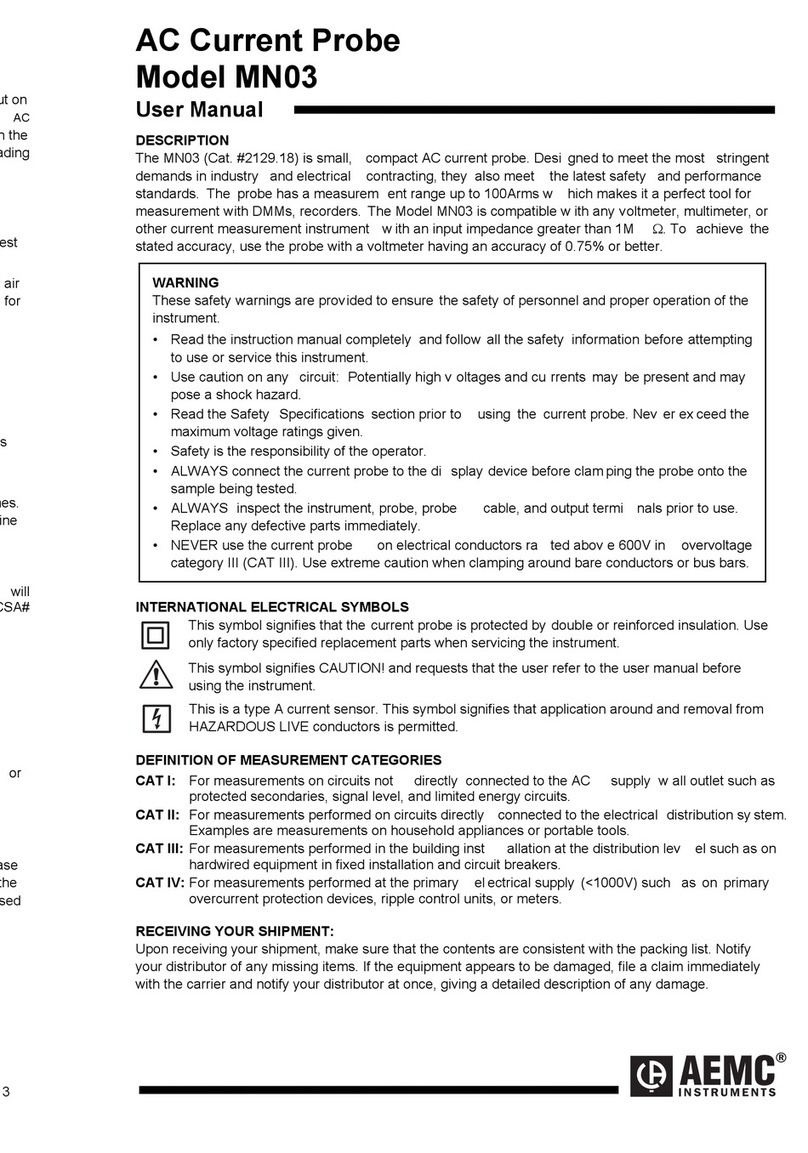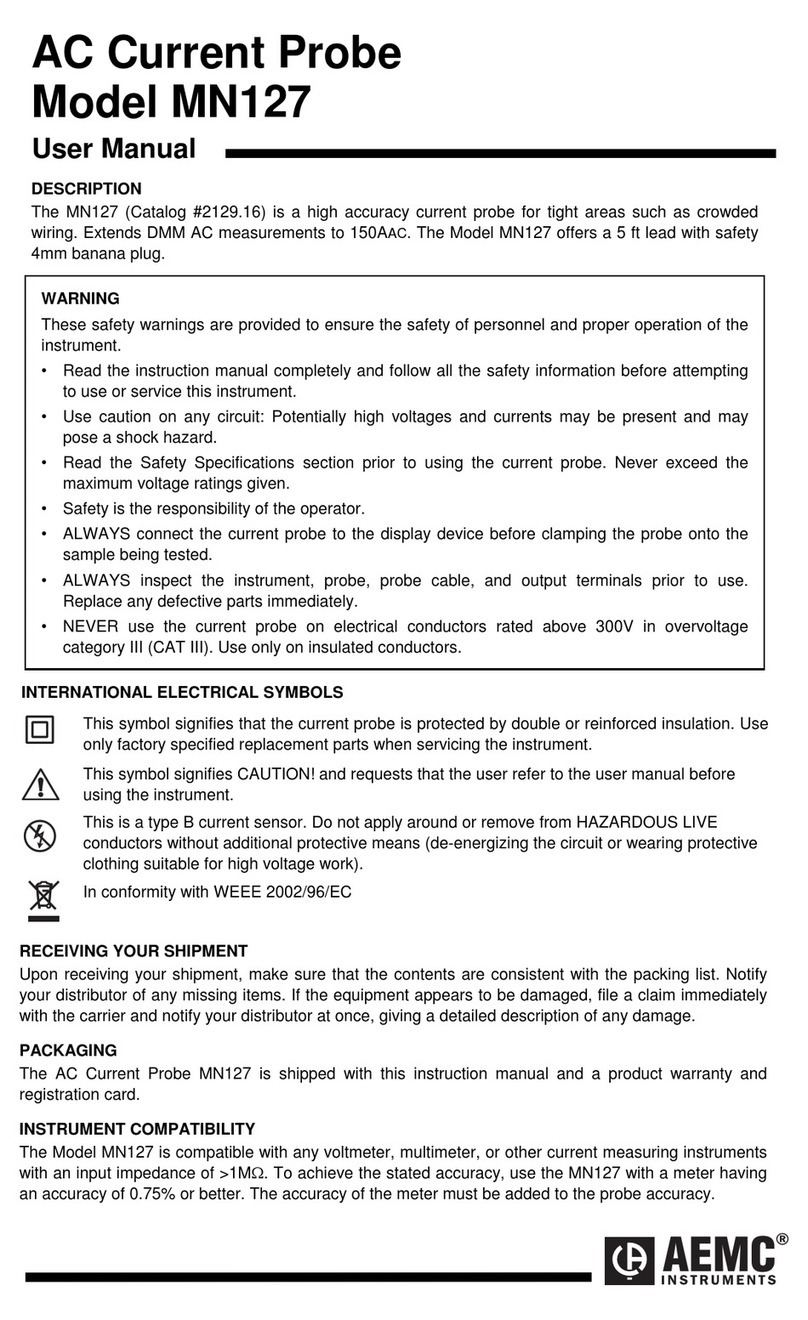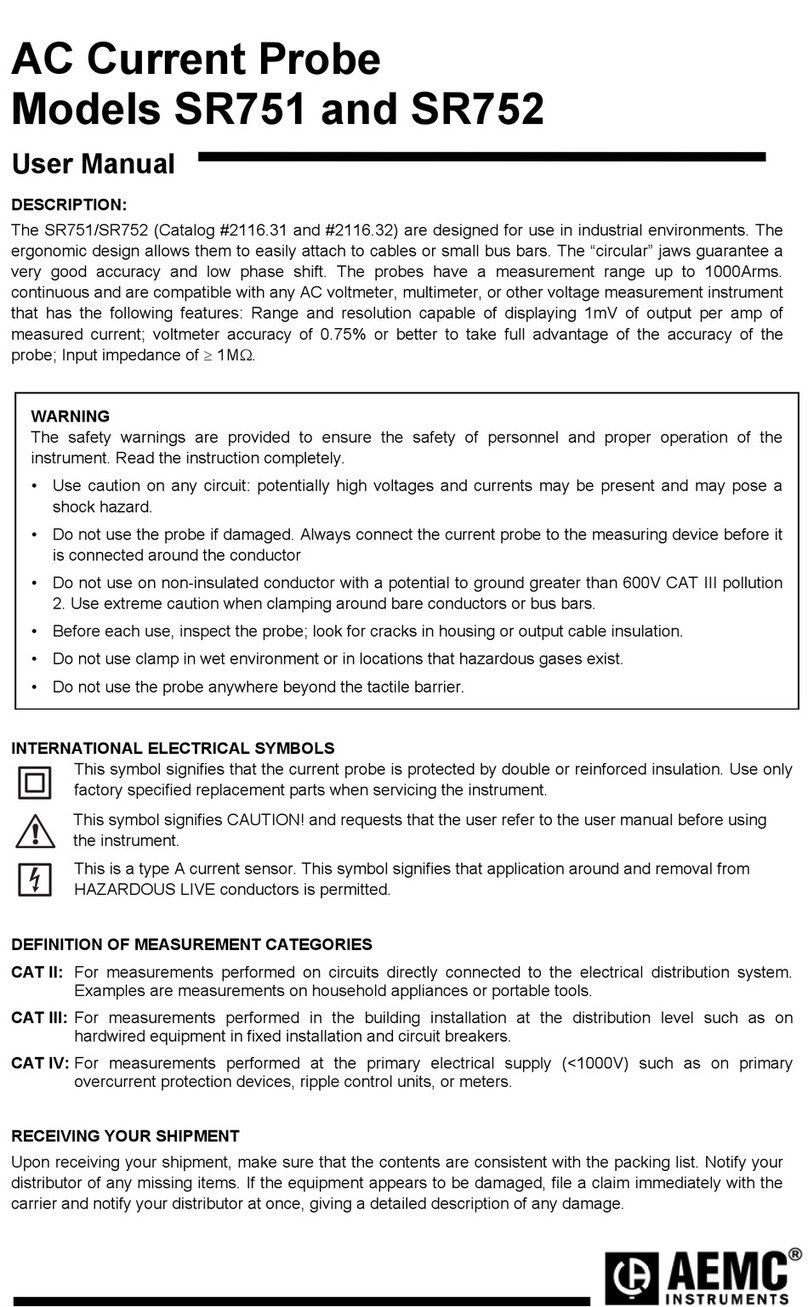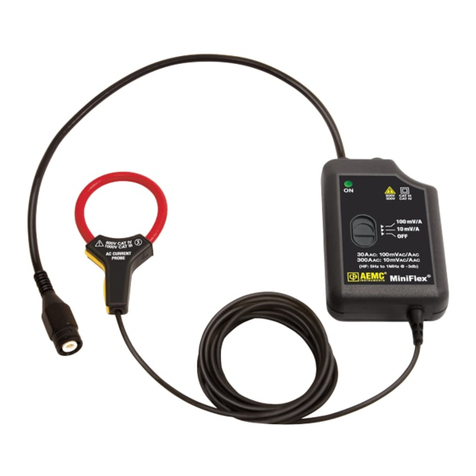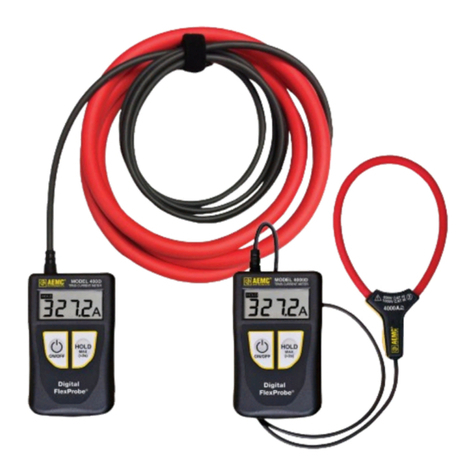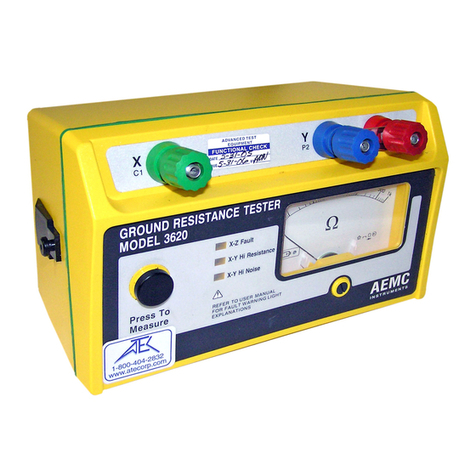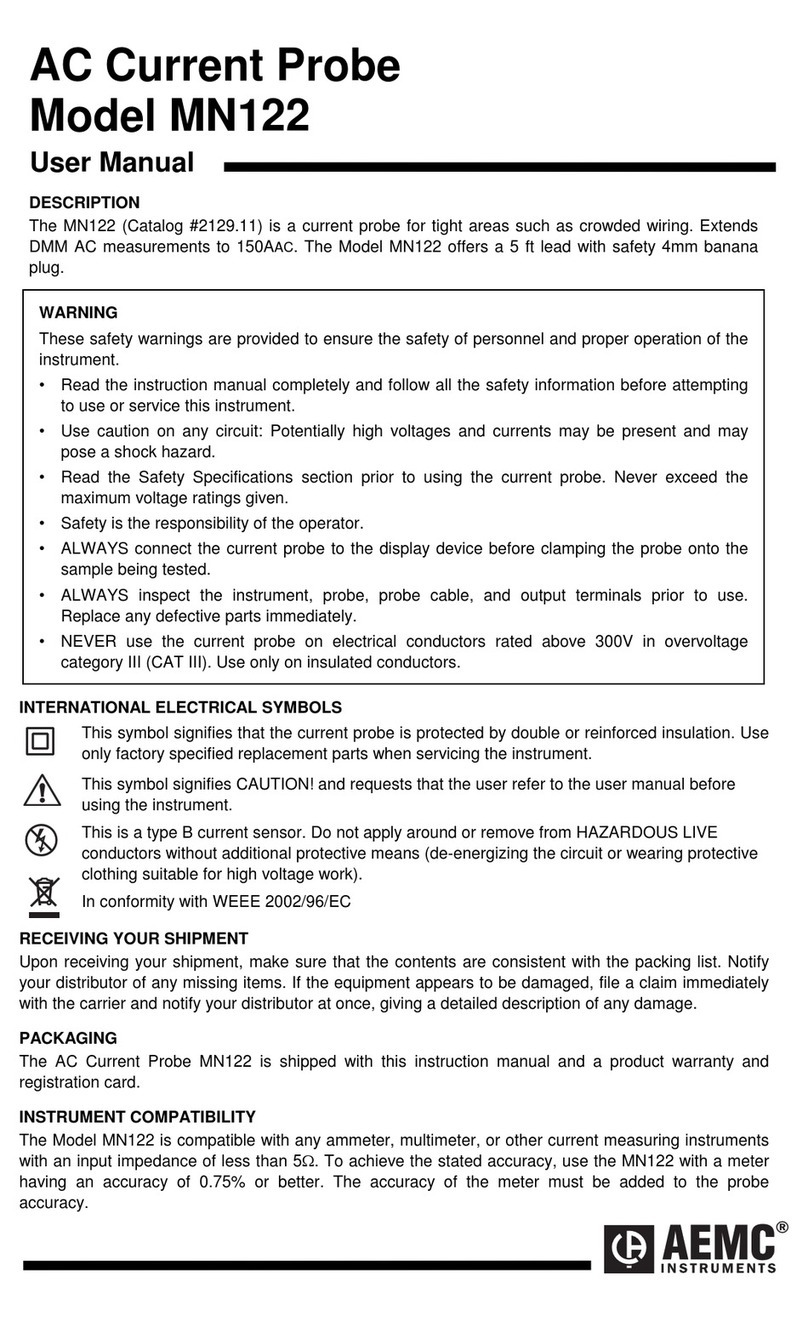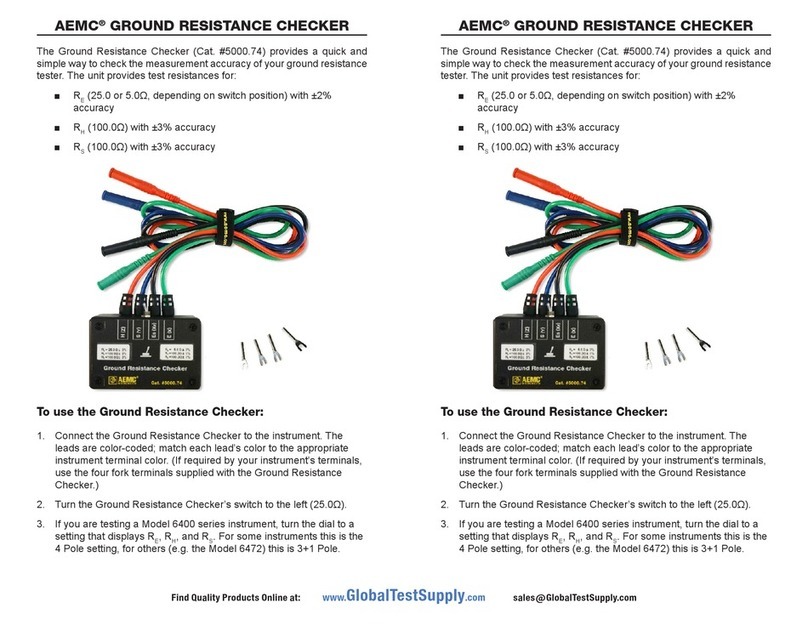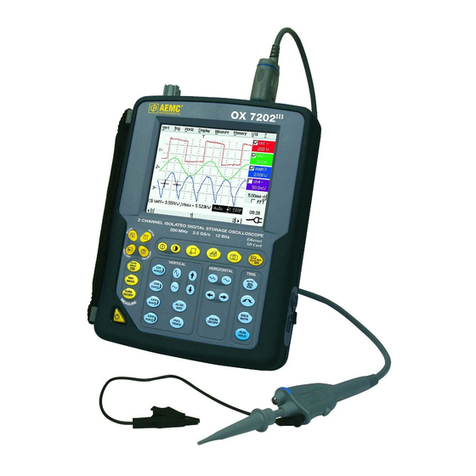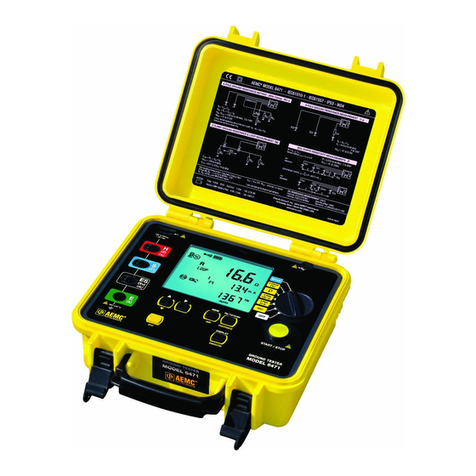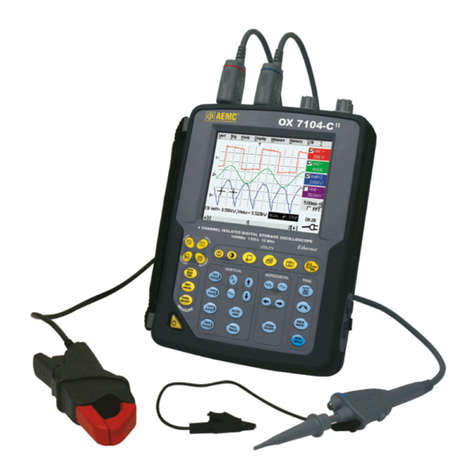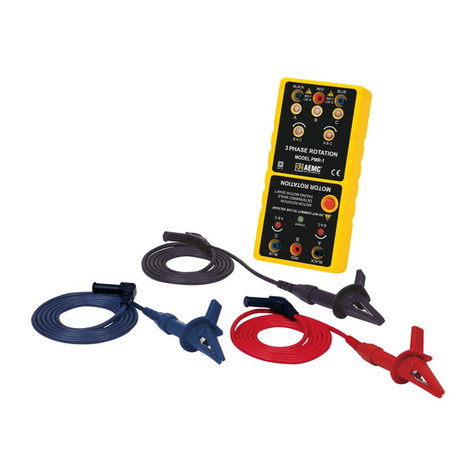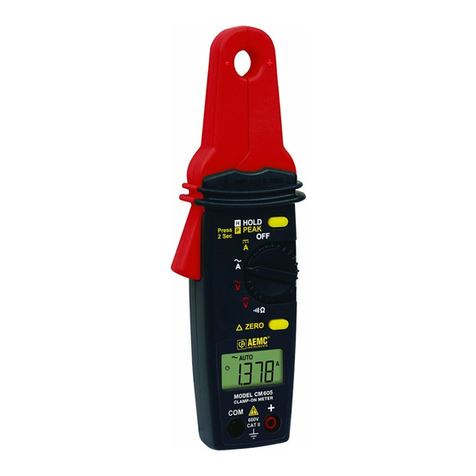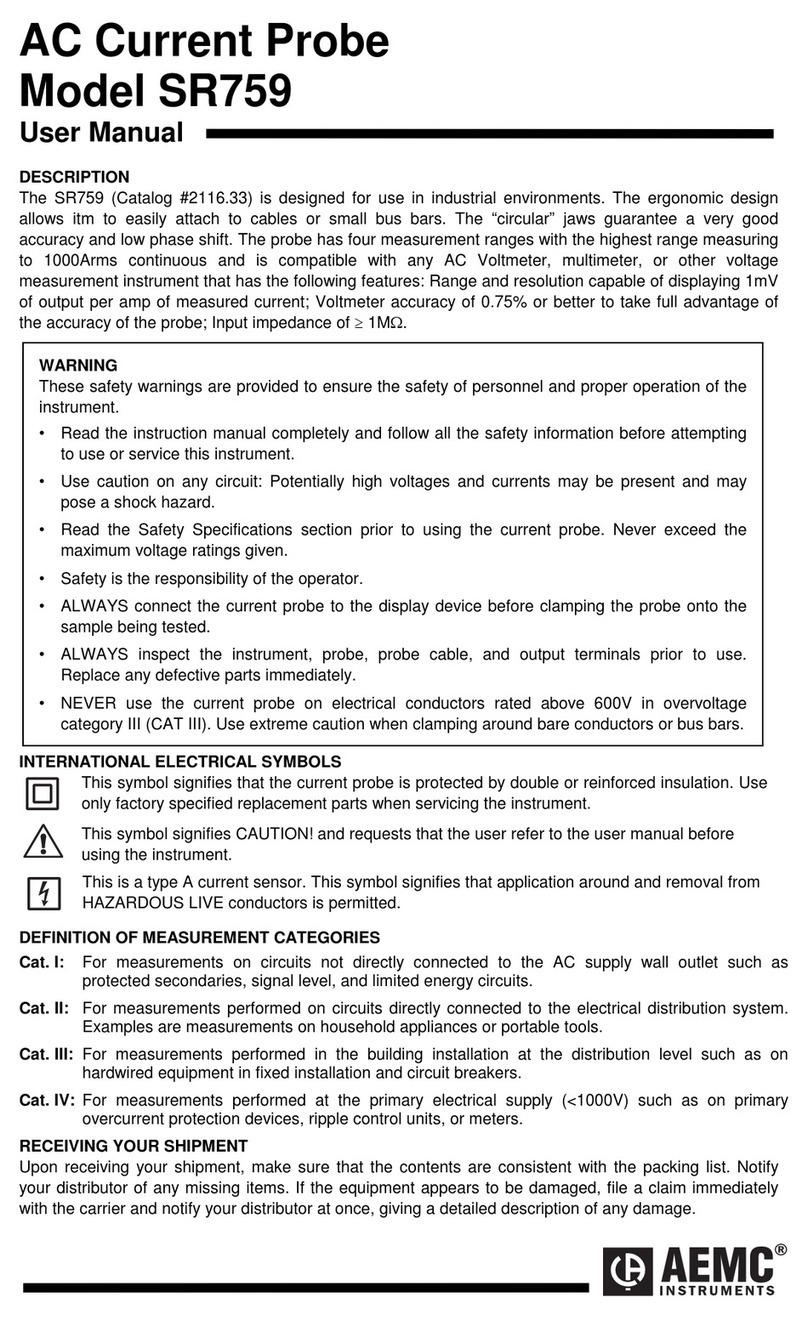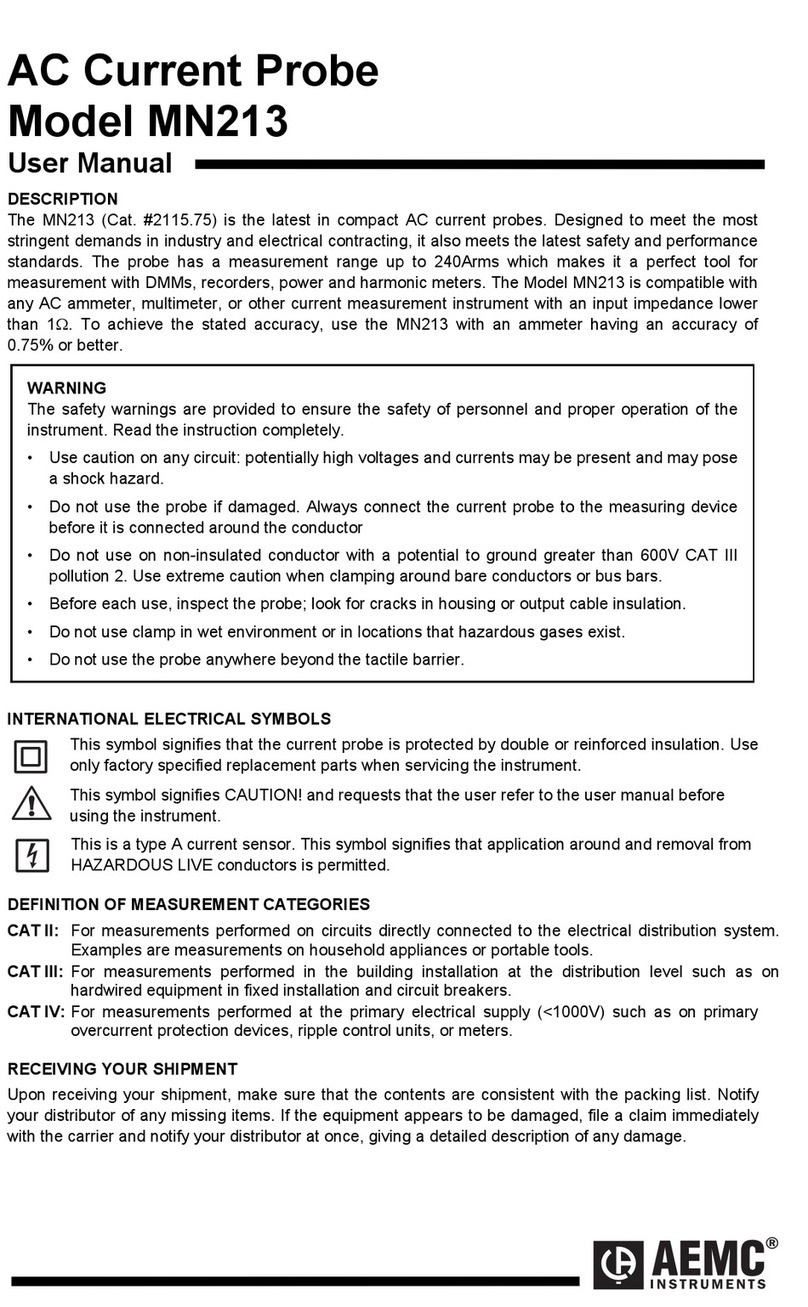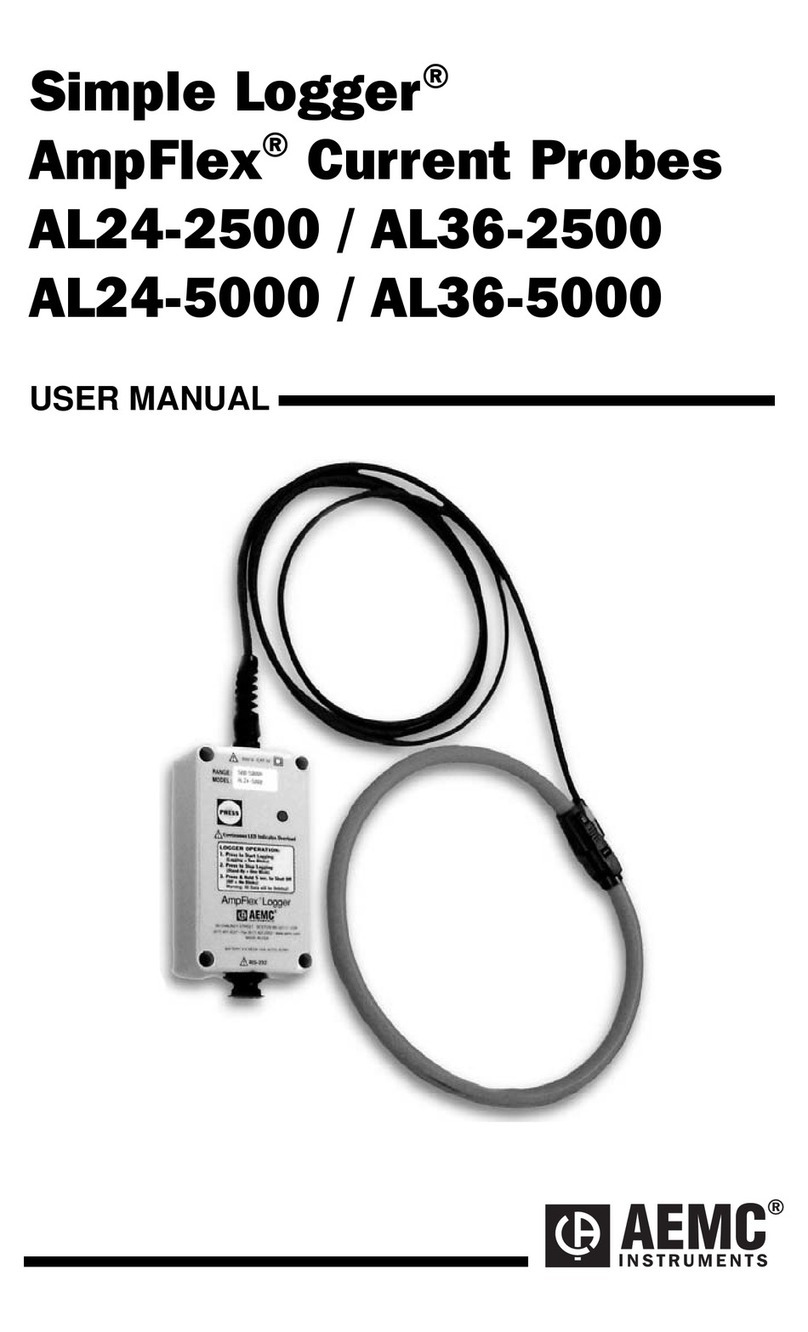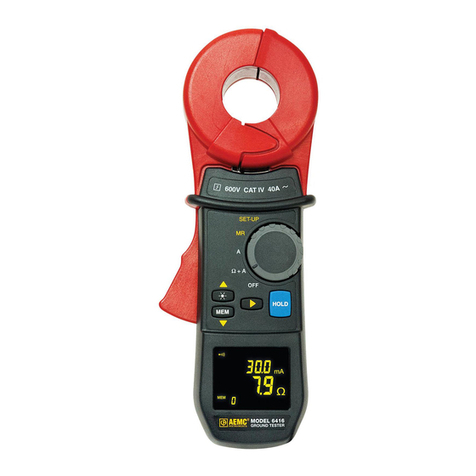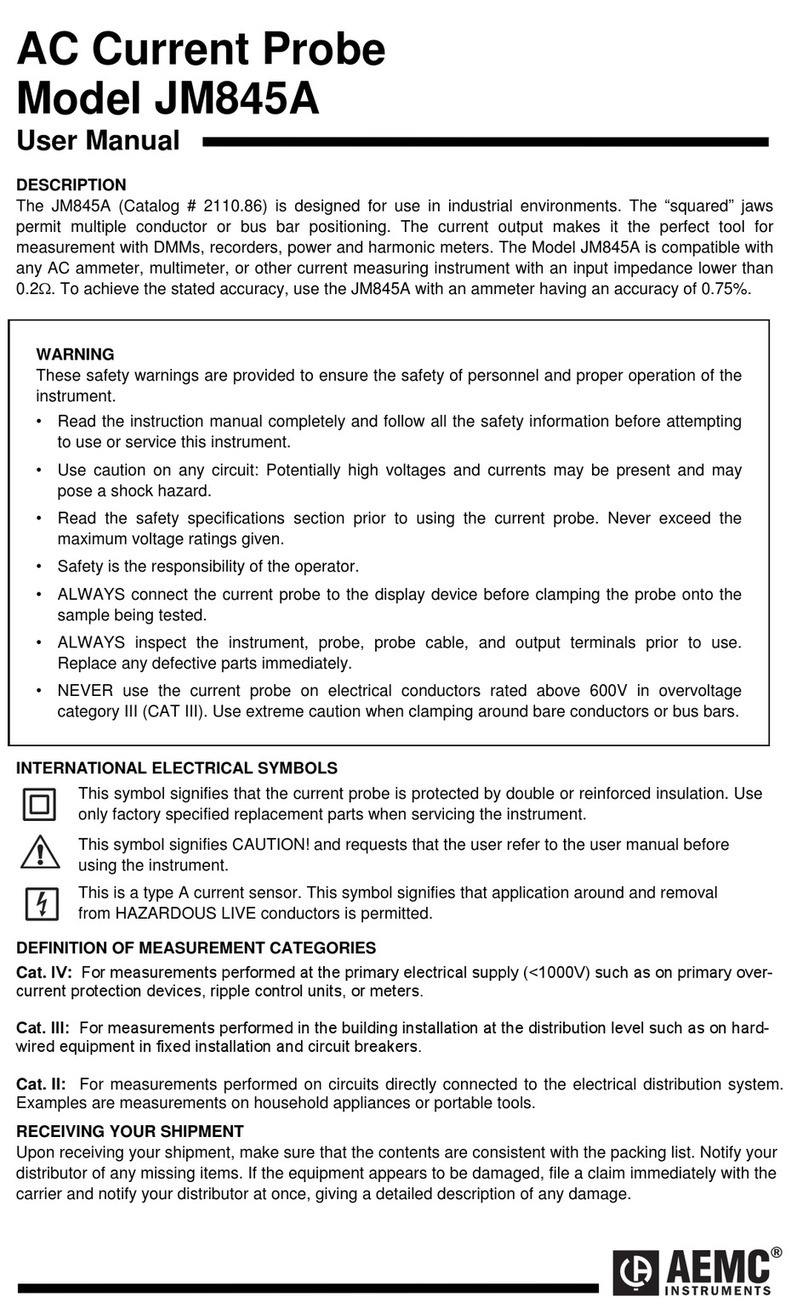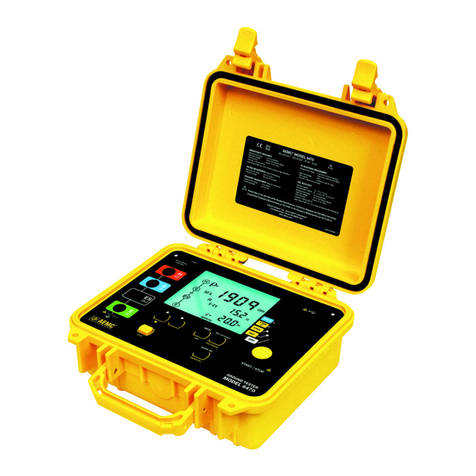
AC Current Probe Model MA114 3
CONTENTS
PRECAUTIONS FOR USE .................................................................................. 5
RECEIVING YOUR SHIPMENT ...................................................................... 6
1. DESCRIPTION................................................................................................. 7
1.1. GENERAL ................................................................................................ 7
1.2. MINIFLEX®MODEL MA114 ..................................................................... 7
2. OPERATION .................................................................................................... 8
2.1. MEASUREMENT PRINCIPLE.................................................................. 8
2.2. OPERATION ............................................................................................ 8
2.2.1. CONNECTING THE MA114 ............................................................. 8
2.2.2. DISCONNECTING THE MA114 ..................................................... 10
2.2.3. AUTOMATIC POWER OFF ............................................................ 10
2.3. EXTERNAL POWER (OPTIONAL)......................................................... 10
3. SPECIFICATIONS ......................................................................................... 12
3.1. REFERENCE CONDITIONS .................................................................. 12
3.2. ELECTRICAL CHARACTERISTICS....................................................... 12
3.3. VARIATIONS IN THE RANGE OF USE ................................................. 13
3.4. TYPICAL FREQUENCY RESPONSE GRAPHS .................................... 13
3.4.1. AMPLITUDE ERROR ..................................................................... 13
3.4.2. PHASE ERROR.............................................................................. 13
3.5. TYPICAL FREQUENCY RESPONSE GRAPHS .................................... 14
3.6. POWER SUPPLY................................................................................... 14
3.6.1. BATTERIES .................................................................................... 14
3.6.2. EXTERNAL POWER (OPTIONAL) ................................................. 14
3.7. ENVIRONMENTAL CONDITIONS ......................................................... 15
3.8. PHYSICAL SPECIFICATIONS ............................................................... 15
3.9. CONFORMITY TO INTERNATIONAL STANDARDS............................. 16
3.10. ELECTROMAGNETIC COMPATIBILITY (CEM) .................................. 16
4. MAINTENANCE ............................................................................................. 17
4.1. CLEANING ............................................................................................. 17
4.2. BATTERY REPLACEMENT ................................................................... 17
WARRANTY ...................................................................................................... 18












